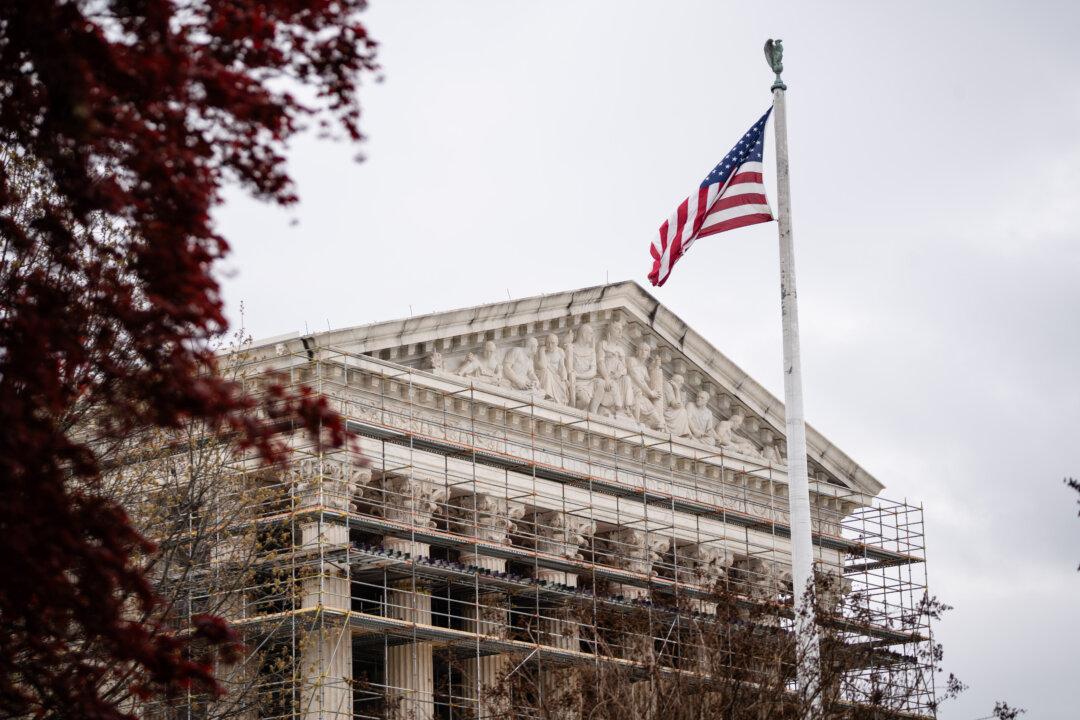The Supreme Court on April 28 considered if the federal government may, after six years, cut off combat-related special compensation to a veteran suffering from post-traumatic stress disorder (PTSD).
Veterans are allowed to seek retroactive, combat-related special compensation (CRSC), but the U.S. Court of Appeals for the Federal Circuit has determined that such payments are subject to the Barring Act (31 U.S.C. 3702), which has a six-year statute of limitations.
The Supreme Court looked at whether the CRSC statute (10 U.S.C. Section 1413), which authorizes such compensation, contains a method for settling claims that supplants the Barring Act.
Settlement refers to when the government renders a final administrative determination about its liability on a claim.
On one mission, he was traumatized when he participated in recovering “over 300 pieces of five or seven soldiers” who were killed. Beginning in December 2005, he was treated for what was later diagnosed as PTSD. In April 2006, he was medically retired from active duty.
After that, Soto was put on the temporary disability retirement list, which meant he was entitled to military retirement pay. Later, the Navy removed Soto from the list and awarded him permanent disability retirement, under which he continued to be entitled to military retirement pay, the petition said.
In June 2016, Soto asked the Navy for CRSC based on his PTSD.
The Navy determined that Soto’s PTSD was related to combat, which qualified him for CRSC as of July 2010. This finding came even though he met the CRSC enrollment criteria as of January 2008, which was the date a law that extended CRSC to medical retirees came into force, the petition said.
This led to the Navy deciding to give Soto just six years of retroactive CRSC payments, covering July 2010 to June 2016. Soto argues in the petition that he is actually entitled to about 8 1/2 years of payments, covering January 2008 to June 2016.
The Navy said that the statute of limitations applies, so to qualify for full retroactive CRSC payments, a person has to file a CRSC claim within six years of a VA decision that might make a person eligible for CRSC, or by the date the person became entitled to retirement pay—whichever date is most recent.
Filing later than six years after initial eligibility means the person will receive only six years’ entitlement to retroactive payments, according to the petition.
The petition said the federal government “has used this six-year statute of limitations policy to pay no more than six years of retroactive CRSC to thousands of other deserving United States military combat veterans.”
Soto filed a proposed class action lawsuit in federal district court in Texas in 2017.
The court ruled in his favor in December 2021, finding the relevant statute “has its own settlement mechanism because it defines eligibility for CRSC, helps explain the amount of benefits and instructs the [Department of Defense] to prescribe procedures and criteria for individuals to apply for CRSC.”
The court held that the CRSC statute was “outside the reach of the Barring Act and—by extension—its six-year statute of limitations,” the petition said. The court also determined that the government owed Soto and other veterans compensation that it wrongly withheld.
A divided Federal Circuit reversed in February 2024, holding that the statute of limitations in the Barring Act “applies because the CRSC Statute does not contain its own settlement mechanism.”
But Soto argues that claims for CRSC are not subject to that time limitation because “the CRSC statute contains its own settlement mechanism without providing its own time limit,” Flynn said.
“Dating back 200 years, claims for all kinds of military pay and benefits, including retired pay, have been settled under [the Barring Act] and its predecessors, and since 1940, those pay claims have been subject to the time bar,” she said.
If the court ignores the six-year limit and rules in favor of Soto, up to six other military compensation programs might be affected.
“We’re aware of no other military pay or compensation statute that opens up the department in that way,” Flynn said.
Justice Sonia Sotomayor asked how large the six programs were.
“What’s the extent of the liability that the government is concerned with here?” she asked.
Flynn said the death gratuity benefit, which can run to $100,000 per survivor, could be affected, as could the basic needs allowance and disability severance.
Soto’s attorney, Tacy Flint, said the case “starts and ends with the text of the Combat-Related Special Compensation statute. Because that statute grants the secretary concerned [of a military department] authority to settle claims for CRSC, the Barring Act does not apply.”
Chief Justice John Roberts said that if the court ruling “is enough to get past the Barring Act based on this statute, the idea is that would sort of open the barn door, getting around a statute that is critically important to … protecting” the public Treasury.
Flint said both the Uniformed Services and Reemployment Rights Act and a postal service statute do not limit when claims may be filed.
Justice Samuel Alito asked why there would be an exception for CRSC decisions.
“What might have motivated Congress to think … generally, we want to have a statute of limitations for submission of claims to the government or for many other things, but in this particular situation, we don’t want that?”
The Supreme Court is expected to issue a ruling in Soto v. United States by the end of June.





